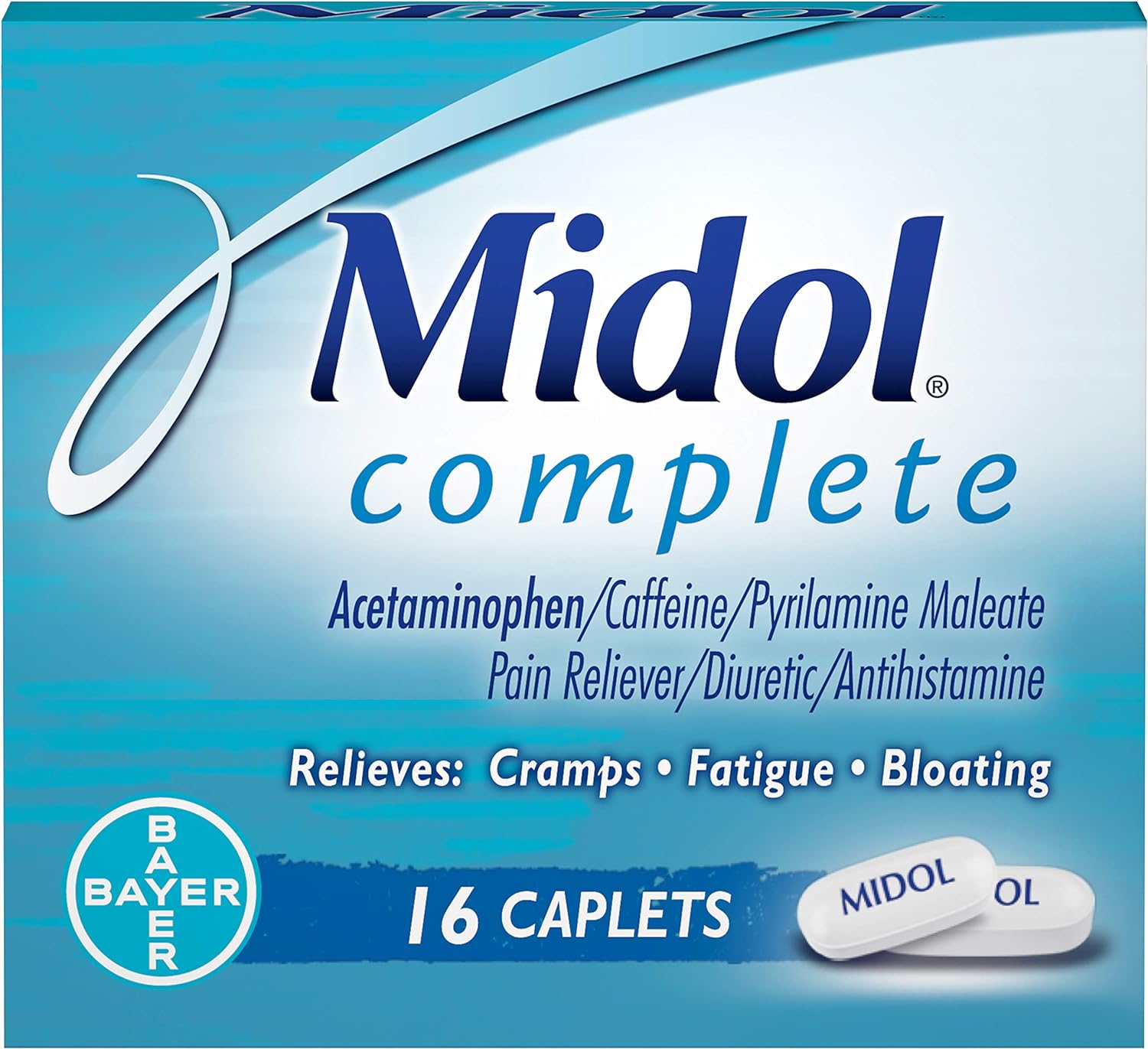The Mystery: What’s Inside Midol?
Midol is an over-the-counter medication that plays a significant role in women’s health. Understanding its ingredients is crucial for informed usage. In this article, we will explore the active and inactive ingredients of Midol, employing the MECE Framework (Mutually Exclusive, Collectively Exhaustive) to organize the content effectively.

What is Midol?
Midol is a popular over-the-counter medication specifically designed to alleviate menstrual symptoms. It is available in various forms such as tablets, caplets, and gelcaps, catering to different preferences and strengths. Women widely rely on Midol to find relief from discomfort during their menstrual cycles.
The MECE Framework
The MECE Framework, which stands for Mutually Exclusive, Collectively Exhaustive, is a structured approach that ensures a comprehensive and organized presentation of information. By using this framework, we can effectively analyze and categorize the content of Midol’s ingredients, providing a clear and logical structure for readers to follow.
Midol’s Active Ingredients
Midol contains several active ingredients that work together to relieve menstrual symptoms. Let’s explore each of these ingredients and their specific roles:
Acetaminophen
Acetaminophen is one of the primary ingredients in Midol. It acts as a pain reliever and fever reducer, helping to alleviate the discomfort associated with menstrual cramps and other symptoms.
Caffeine
Caffeine is another ingredient found in Midol. It not only provides a mild energy boost but also acts as an enhancer for pain relief. Caffeine can increase the effectiveness of other active ingredients in Midol, helping to alleviate symptoms more effectively.
Pyrilamine Maleate
Pyrilamine Maleate is an antihistamine included in Midol. It helps reduce symptoms such as bloating and water retention, providing relief during menstruation. By targeting these specific symptoms, Pyrilamine Maleate contributes to overall comfort during this time.
Inactive Ingredients and Excipients
In addition to the active ingredients, Midol also contains inactive ingredients and excipients that play important roles in the formulation. These include:
Calcium Carbonate
Calcium Carbonate is included in Midol as an antacid. It helps neutralize stomach acid, providing relief from indigestion or heartburn that may occur alongside menstrual symptoms.
Corn Starch
Corn Starch serves as a binder and filler in Midol. It helps hold the tablet together and ensures a consistent dosage of the active ingredients.
Croscarmellose Sodium
Croscarmellose Sodium is a disintegrant in Midol. It aids in tablet dissolution, allowing the medication to break down and be absorbed by the body more efficiently.
Frequently Asked Questions
Is Midol safe for all women?
Midol is generally safe for most women. However, it is important to read the instructions and consult a healthcare professional if you have any underlying medical conditions or concerns.
Can I take Midol if I have allergies?
If you have known allergies to any of the ingredients in Midol, it is advisable to avoid using it. Always check the label and consult with your doctor or pharmacist if you have any concerns.
Does Midol have any side effects?
Like any medication, Midol may have potential side effects. These can include drowsiness, upset stomach, or allergic reactions. It is important to follow the recommended dosage and consult a healthcare professional if you experience any adverse effects.
Can I take Midol if I’m already on other medications?
If you are taking other medications, it is important to check for potential drug interactions before taking Midol. Some medications may interact with the active ingredients in Midol, affecting their effectiveness or causing adverse effects. It is best to consult with a healthcare professional or pharmacist to ensure the safe use of Midol alongside other medications.
Is Midol addictive?
No, Midol is not addictive. It is an over-the-counter medication that can be used as needed for menstrual symptom relief. However, it is important to use Midol as directed and not exceed the recommended dosage to avoid any potential risks or side effects.
Can men use Midol?
While Midol is primarily marketed towards women for menstrual symptom relief, there is no inherent harm in men using it. However, it is always advisable to consult with a healthcare professional to determine the most appropriate medication for specific symptoms or conditions.
How long does it take for Midol to start working?
The onset of action for Midol can vary from person to person. Generally, it starts to work within 30 minutes to an hour after ingestion. However, individual responses may differ, so it is important to follow the package instructions and consult a healthcare professional if you have any concerns about the timing of symptom relief.
Can Midol be taken on an empty stomach?
Midol can be taken on an empty stomach. However, if you experience any stomach discomfort, you may choose to take it with food to help minimize any potential gastric irritation.
Are there any age restrictions for using Midol?
Midol is generally safe for use by adults and adolescents. However, it is important to follow the recommended age guidelines specified on the packaging. If you have any concerns or are considering giving Midol to a child, it is best to consult with a healthcare professional.
Can I use Midol while pregnant or breastfeeding?
If you are pregnant or breastfeeding, it is important to consult with a healthcare professional before using Midol. They can provide personalized advice based on your specific situation and guide you on the appropriate use of medications during pregnancy or while breastfeeding.
Conclusion:
Understanding the ingredients of Midol is essential for informed usage. By exploring the active and inactive ingredients, we have gained insight into how Midol works to alleviate menstrual symptoms. It is important to remember that everyone’s body is unique, and consulting a healthcare professional is always recommended for personalized advice and guidance on medication usage.




